Why hand hygiene remains important
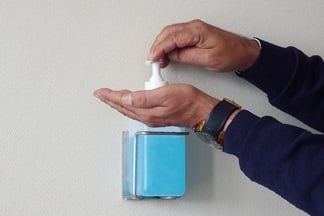
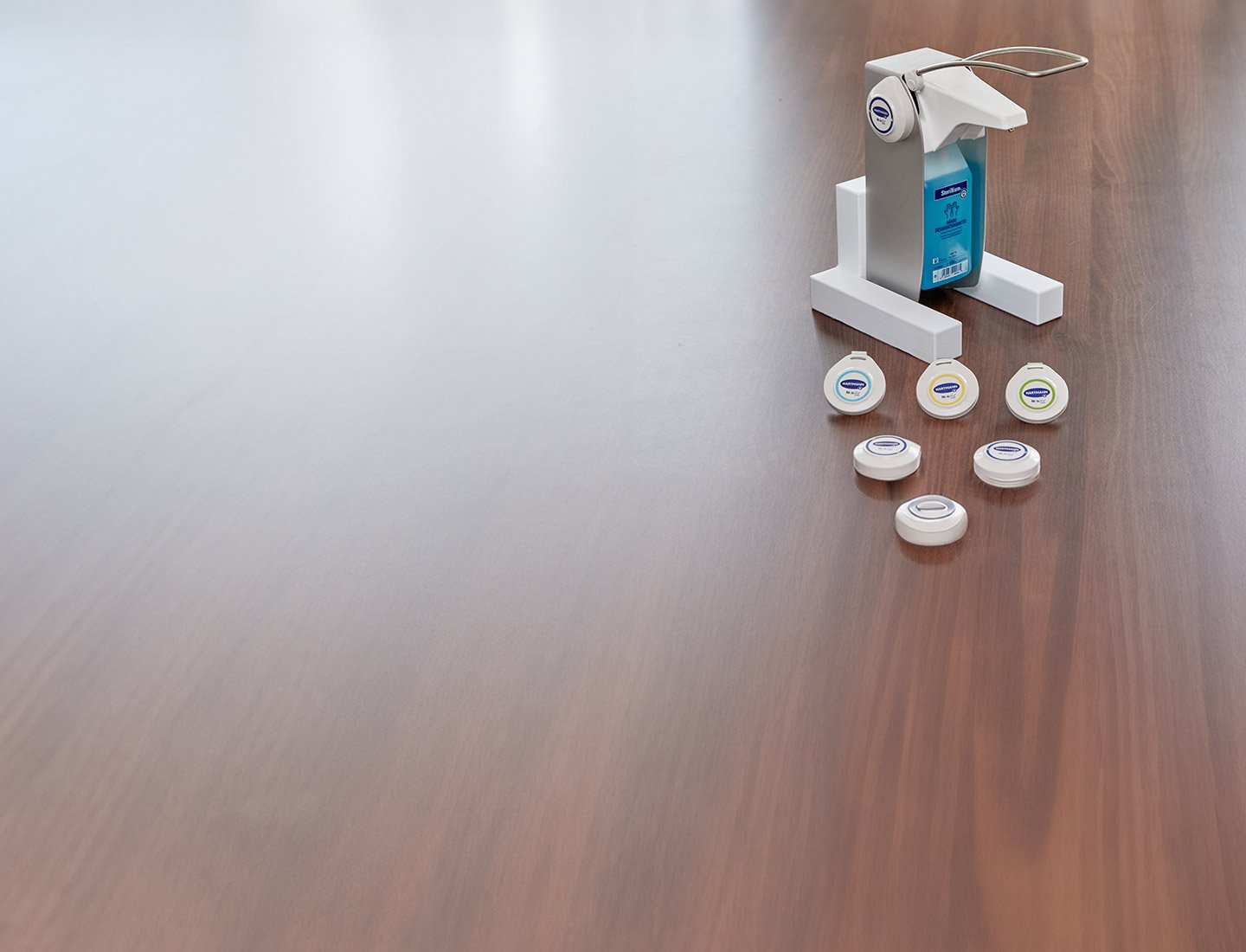


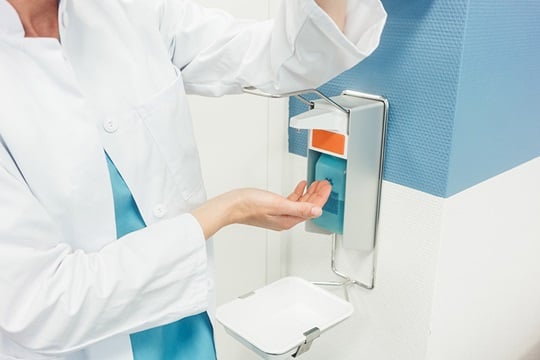
Hand disinfection is an essential hygiene measure for hospital staff - especially before and after contact with patients. No surprise, given that 90% of all infections in the healthcare sector are transmitted via hands [1]. However, only one out of every two required hand disinfections is actually carried out [2].
Consequently, such inadequate hygiene compliance means pathogens can spread more easily in hospitals, sometimes causing serious illness among patients. In Europe alone, up to 3.8 million of these so-called healthcare-associated infections are registered every year [3]. At the same time, there are many ways to improve hand hygiene compliance in hospitals and thus prevent more infections. Thomas Kant explains one of them.
Our healthcare system is currently suffering from an enormous shortage of skilled personnel. Studies show that in Germany alone, there will be a shortage of up to 1.8 million healthcare professionals in the hospital sector over the next few years [4]. This already often causes a huge overload for existing employees, leading to less and less time for essential medical and nursing tasks.
Hand hygiene, which is often neglected during a stressful working day, suffers as a result. If awareness of the need for hand disinfection is lacking as well, this inevitably leads to a drop in compliance.
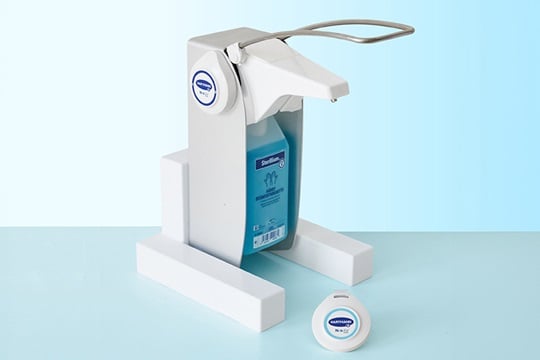
No. The data gathered is completely anonymous. This means that we do not know which person disinfected their hands when, at which dispenser, and how thoroughly. Rather, the focus is to find out on which wards or ward zones comparatively more or less hand disinfection takes place and how different job groups vary in their behavior.
NosoEx® is therefore available in two versions: NosoEx® Basic and NosoEx® Advanced. The basic version generally records all hand disinfection at the equipped dispensers. The advanced version also allows the data to be broken down by occupational group. To do this, employees wear a color-coded Bluetooth transponder on their clothing. Each occupational group is assigned a different color and separate data can then be collected on nursing staff and doctors, for example. Except for the color, the transponders are completely identical and therefore do not allow any conclusions to be drawn about specific individuals.

"NosoEx® can be an important building block in hospital hygiene, as it shows in black and white where improvements make sense."
The recorded data is made available to the clinics via a special online dashboard. This allows those responsible to see directly how dispensers are being used on the various wards. After two to three months, it is very easy to see where there is a specific need for improvement in hand disinfection so that targeted measures can be taken.
NosoEx® also makes it possible to subsequently quantify corresponding measures such as training staff or purchasing additional dispensers. The dashboard allows those responsible to see, at a glance, whether or not hand disinfection behavior has improved following the measures. This also helps justify investments such as new dispensers, as it proves the positive effect of such measures in concrete figures.
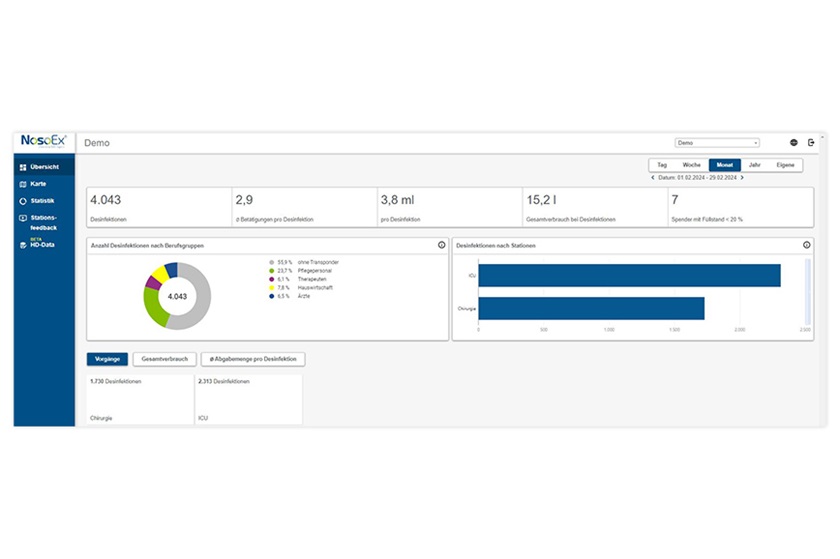
Yes, there is definitely a positive effect here. Especially at the beginning, staff are particularly careful to disinfect their hands because they know that NosoEx® is collecting data about hand hygiene, so that the installation of the solution is directly an intervention.
In addition, clinics can always share the processed data to staff as ongoing feedback - for example via a separate monitor in the ward room where employees can check current figures. This means staff can always see for themselves how the ward has performed in terms of hand disinfection compliance compared to the previous week or month. If the figures are low, this can encourage improvement.

"Transparency is key. Staff need to know what data is being collected and for what purpose it is being used."

As the system is largely self-sufficient, it easily integrates into the existing infrastructure. Most common dispenser types can be equipped with NosoEx® so there is no need to buy new dispensers. For data transfer we use Bluetooth to be independent from the Wi-Fi network in the clinic. We install a router at one or two locations on the ward, which needs electricity, collects the data via Bluetooth, and then sends it to our server.
In addition to these technical requirements, the work culture must of course also be appropriate. A system like NosoEx® should not be imposed by force. Hygiene is a team sport and there must be openness and a strong feedback culture for this to work. It is a challenge for everyone: Manufacturers, sales, hospitals, and staff.
[1] Kramer A (2006) GMS Krankenhaushyg Interdiszip 1(1): Doc14
[2] KRINKO (2016) Bundesgesundheitsbl 59: 1189-1220.
[3] Suetens et al. (2018) Euro Surveill 23(46): pii=1800516
[4] pwc / Fachkräftemangel im deutschen Gesundheitswesen 2022
https://www.pwc.de/de/gesundheitswesen-und-pharma/fachkraeftemangel-im-deutschen-gesundheitswesen-2022.html